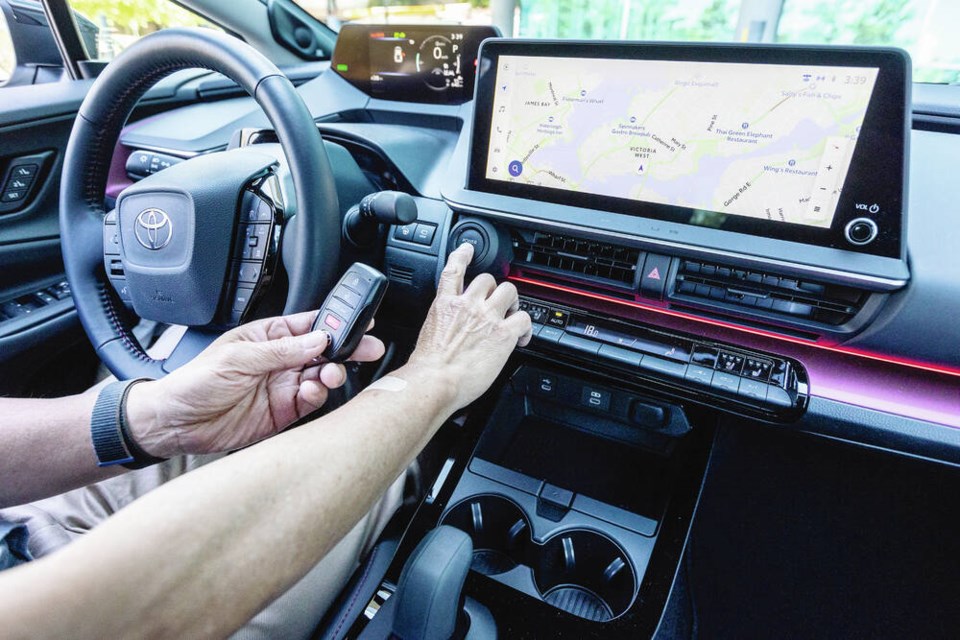The level of computer sophistication now being used to run your car and keep you safe on the road increases by the day.
You are no longer driving a car. You are operating a smart device which, while moving you around town, connects to the internet, communicates with other cars and offers features and information that we couldn’t dream about even five years ago.
But these modern tech benefits come with risks and cyber criminals are working overtime now to exploit them.
In relation to the number of cars on the road, the problem is still extremely small. According to the National Centre for Manufacturing Sciences there were around 300 recorded incidents of car cyber hacking in 2021. That was up 100% from 2021 and only includes “recorded” incidents.
Yet observers of the industry are warning us that the problem is the auto industry’s next big challenge.
We are already seeing it through the lens of good old-fashioned auto theft. In Ontario, for example, thefts of keyless vehicles have skyrocketed.
According to Brampton mayor Patrick Brown, thefts have risen by 97% in Peel Region, 80% in Toronto, 134% in York and 120% in Montreal since 2019. These thefts mainly occur through a hacking process which re-programs a car’s fob called a “relay attack”.
Thieves use a device which accesses the radio frequency between the car and its fob. Once the signal is acquired the vehicle is tricked into believing its own key is being used for activation.
Even back in 2017, the UK the firm Tracker reported that 80% of stolen and then recovered vehicles were stolen without accessing the vehicle’s keys.
Now auto industry watchers are also looking beyond the issue of car theft and studying the problems of “cyberjacking.”
Cyberjacking can take many forms. For example a hacker could access any number of personal information items stored in a car’s computer system. A car could be tracked in real time by nefarious third parties. Automated self or semi autonomous driving manoeuvres could be overridden. A vehicle could be falsely reported as stolen. Worst of all, the vehicle could be rendered unusable through a denial of service attack and held for ransom.
So what can be done? The auto industry is under increasing pressure to close these gaps but for the moment here are a few suggestions:
If your car has a wifi hotspot, protect it with a strong password and change it regularly.
If there is a requirement to plug in a USB stick to update software or access music and other data, ensure that it has been scanned with reputable anti-virus software first.
Pay attention to manufacturers warnings and updates. Software and other security updates are now as important as regular mechanical maintenance.
Turn off your Bluetooth and wi-fi systems when not in use. It’s inconvenient but they are the means by which hackers and thieves are best able to access your vehicle’s systems.
Store your key fob in a Faraday bag. These are small pouches which use a layer of metal or mesh to block the reception of electromagnetic signals.
As consumers, we need to push industry and government to start closing these cybergaps. One expert believes that by simply returning to the procedure of requiring a physical key to be inserted into a car’s ignition switch, as in the past, this current wave of auto theft could be reduced by half.
It’s great that computer tech has revolutionized the auto industry but it also means we have to now think about driver safety beyond simply keeping our eyes on the road.
Glove Box: Regular checks under the hood are always a good idea and not just for maintenance reasons. Why? Just ask BonBon the dog who, in April this year, was discovered wedged in the moulding around the engine of Carrie Gillaspie’s car — after she had just driven 50 kilometres from Kansas to Missouri. When she got out of her car, Gillaspie swore she heard whimpering from the engine area. She was right. Opening the hood she saw two small eyes staring back at her. With the help of colleagues they managed to dismantle enough of the vehicle trim to free four-month-old BonBon who had survived the ordeal but sadly had to have her tail amputated. BonBon, a Pomeranian Shih Tzu mix, was turned over to a nearby animal shelter and was soon reunited with her owner.
>>> To comment on this article, write a letter to the editor: [email protected]



